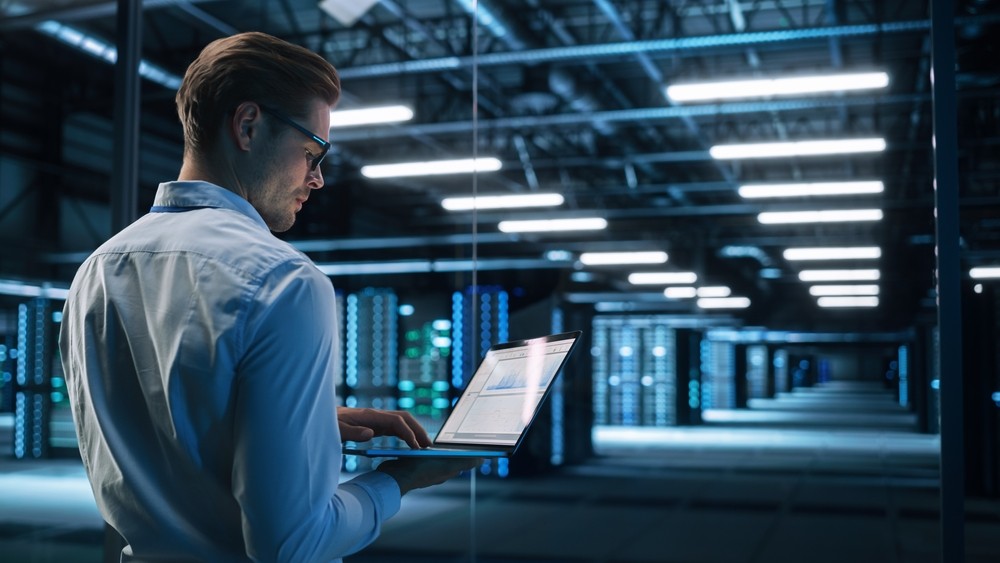Behind today’s digital devices and fast-moving technology sit vast data centers working around the clock to meet the demands of tech users. From chatbots that answer questions in seconds to smartphones capable of storing tens of thousands of photos, and everything in between, data centers make this all possible. However, with the growing reliance on technology and the surge in demand driven largely by artificial intelligence (AI), the infrastructure needed to power such capabilities is expanding at a rapid pace. On top of this, the space left to build and run facilities is rapidly shrinking.
Data center providers are racing to keep up with these demands. As a result, many are scouting for scarce, strategic locations for next-generation facilities, with tech giants having already invested billions in expansions. In addition, McKinsey projects global data center capacity could triple by 2030, with 70% of demand coming from AI workloads. Yet finding the right spot isn’t a simple task. It’s not just land to build upon; operators also face constraints around power, cooling, environmental pressures, and local planning regulations.
Ultimately, the race for space is intensifying, and the industry is now locked in a high-stakes competition for where facilities should go next. Operators must explore different strategies, which they can do with the help of digital twins. By virtually replicating physical environments, data centers can model potential sites before breaking ground.
The Ireland shift
For years, Ireland was considered a haven for data centers, long valued for its cool climate, tax incentives, and strong digital infrastructure. However, as its energy grid faces mounting pressure, it’s becoming a less viable option. Permissions to build have been curtailed due to dwindling resources, and the strain is only being amplified by AI workloads. Tools like ChatGPT now use more resources by consuming more than 80kW per rack, with the latest chips pushing densities as high as 120kW.
Whilst ensuring existing facilities are used to the best of their ability is key, one solution to the lack of space lies in diversifying where new facilities can be built. Companies are now looking beyond traditional hubs such as Ireland to alternative options. This includes busy cities, such as London, or further afield in the North West of England, and even more rural areas of Scotland. By doing so, the industry can better balance performance, resources, cost, and more.
Digital twins play a crucial role here, enabling operators to create a digital replica of each facility, simulating various systems and power dynamics in differing infrastructures before any construction begins. As such, it’s no wonder that 73% of decision-makers say digital twins are a game-changer for facilitating technological innovation within data centers. As pressures mount, these insights will become even more essential, helping designers build smarter, more efficient data hubs in an increasingly crowded and resource-constrained landscape.
Bustling cities
One of the most immediate alternatives is retrofitting, particularly in dense urban centers such as London. With Ireland no longer an option, retrofitting offers a practical path forward alongside edge data centers and locations in cooler climates. It presents opportunities to use existing buildings; for instance, Telehouse South in Docklands was retrofitted in the early 2020s. Doing so, as opposed to knocking down and rebuilding, allows for faster delivery and connections to the grid. Furthermore, it allows access to top-tier locations that could otherwise remain as empty buildings.
Beyond this, proximity to users is another huge factor. Having facilities in regional hubs creates a distributed edge network across the UK. By 2030, the edge data center market alone is expected to grow by nearly 15% to meet AI’s increasing real-time data processing demands. By bringing compute closer to where data is generated and consumed, these sites also enable the low-latency performance needed for AI workloads while connecting seamlessly back into hyperscale ecosystems from the likes of London, Slough, and Manchester.
Before retrofitting begins, wherever that may be, digital twins enable operators to simulate facilities ahead of physical work being carried out. They also ensure decision-makers understand how systems will perform in environments not initially designed for today’s high-density loads. For example, as AI pushes rack densities beyond the limits of air cooling, operators are increasingly turning to liquid solutions, already adopted by 45% of data center leaders, with another 19% planning to follow within a year. Here, digital twins can model how liquid cooling integrates into these retrofits to reduce risk and provide insight into airflow, heat reuse, and other performance factors. This data-driven approach not only optimizes cooling but also supports responsible strategies such as waste heat recovery.
Beyond cooling, digital twins also forecast structural limits such as floor load capacity and rack densities, airflow dynamics, and power capacity, while factoring in external variables such as climate or surrounding obstructions. Applied to retrofits, these simulations streamline upgrades by enhancing space, energy use, and uptime. Digital twins test these complex systems to confirm they can be implemented from day one. Ultimately, this ensures faster, more resilient deployments in urban areas.
Remote locations
Another space where data centers thrive is in the opposite: remote locations. They offer lower real estate costs than major cities and easier access to renewable energy, cheaper land, and less grid congestion, making it easier to support AI’s escalating loads. For instance, Scotland has plenty of land and a cooler climate, and parts of the North West of England are not only lower cost, but also home to the Northern Powerhouse. These sites are ideal for large-scale compute, complementing edge facilities that handle real-time demand closer to users.
Just as in planning a retrofit, operators must leverage digital twins in new, remote data centers. Once facilities are live, these digital replicas enable remote monitoring, allowing performance to be tracked and potential issues predicted without large on-site teams. They also enhance efficiency by optimizing power, cooling, and connectivity in resource-constrained settings, while improving resilience by modelling potential scenarios to support faster response and recovery.
Sustaining the future
In both situations, digital twins play a crucial role, enabling data center designers to simulate, map, and improve infrastructure design, connection, capacity, and performance. As a result, complex systems work seamlessly within their unique physical and environmental contexts.
With prime sites in short supply, data center designers are turning to alternative strategies, such as retrofitted buildings and regional hubs capable of supporting rising workloads. Locking in the right location and planning accordingly gives data centers the power to scale sensibly and safeguard resilience in a rapidly changing technology landscape.




